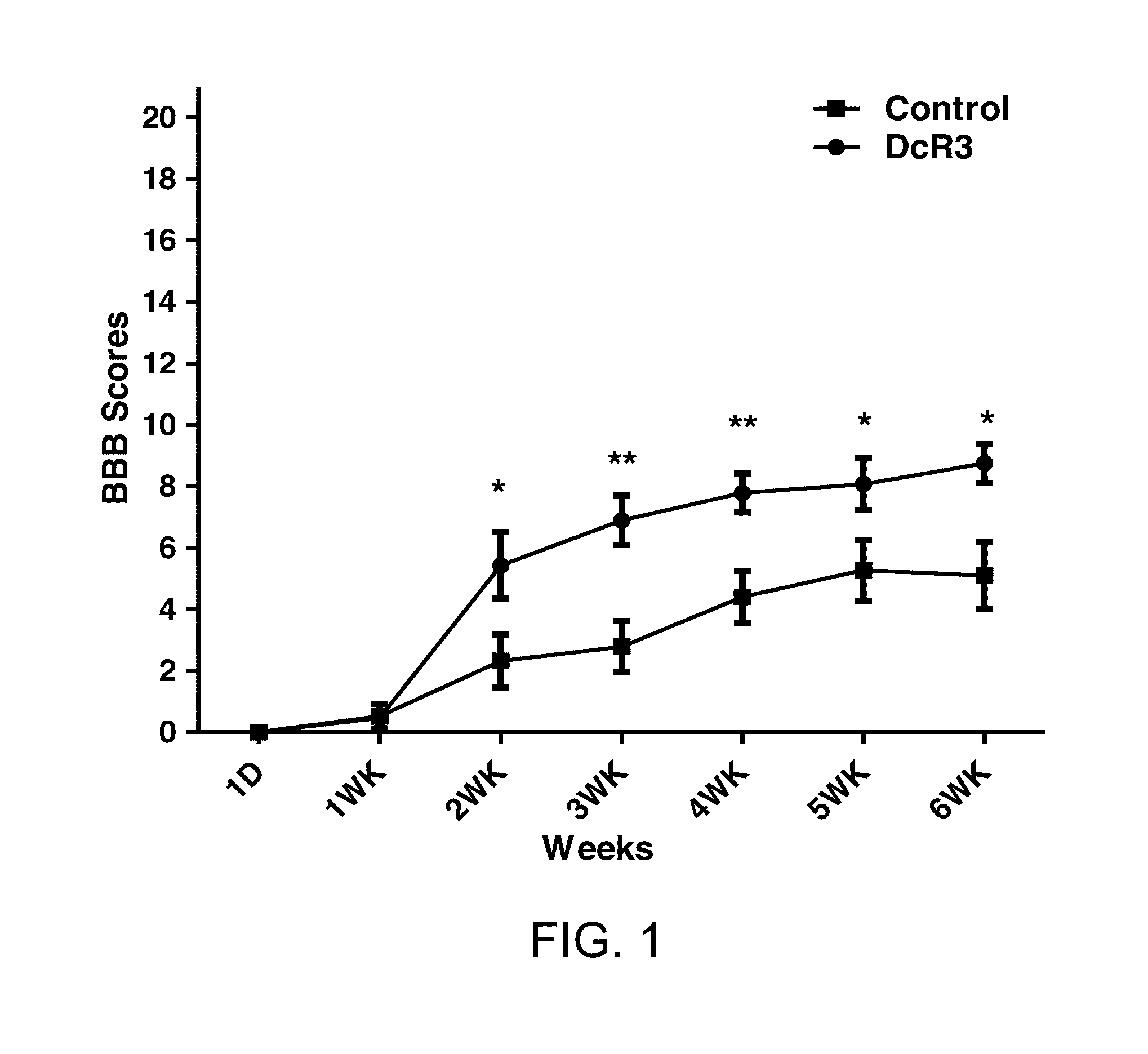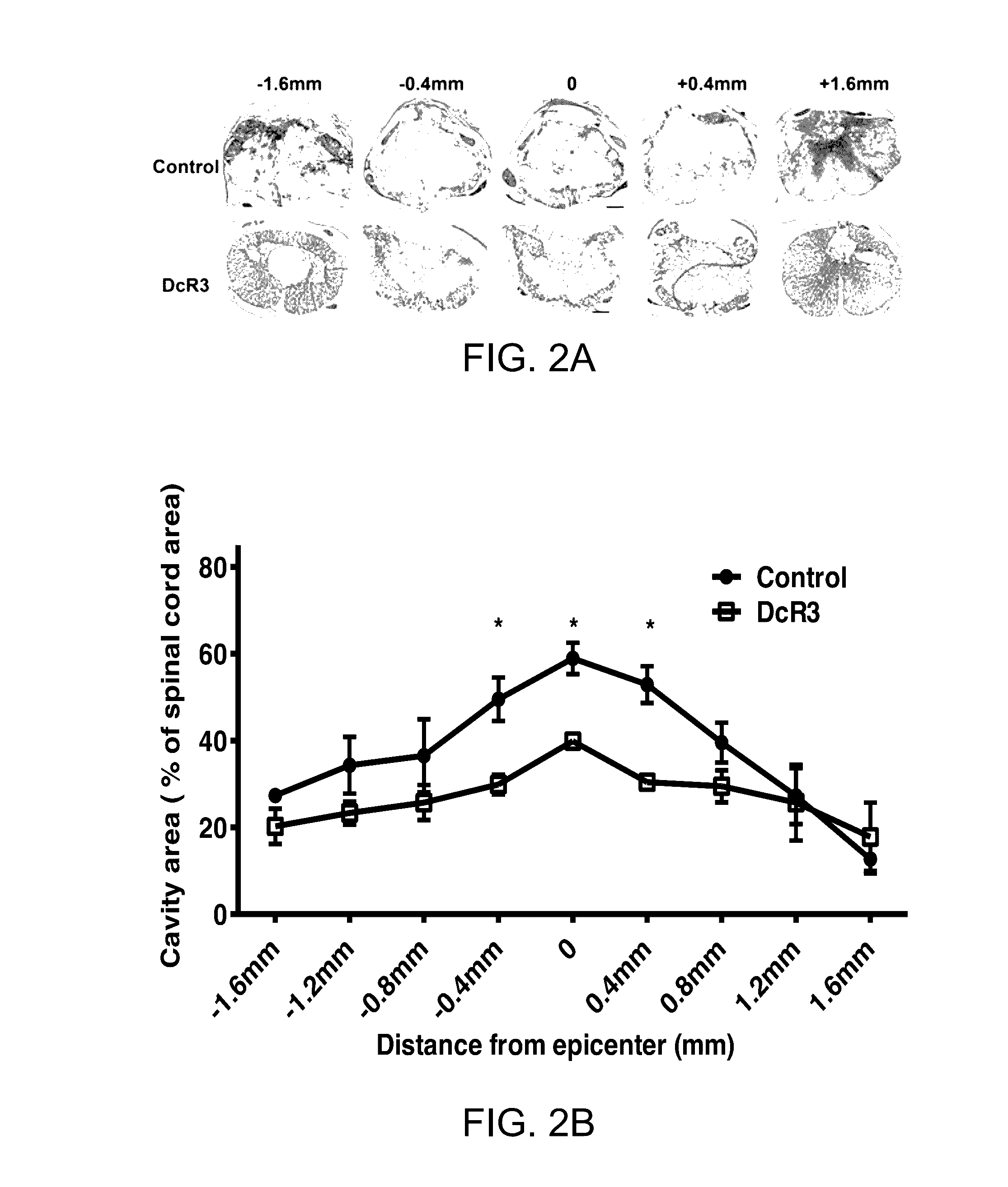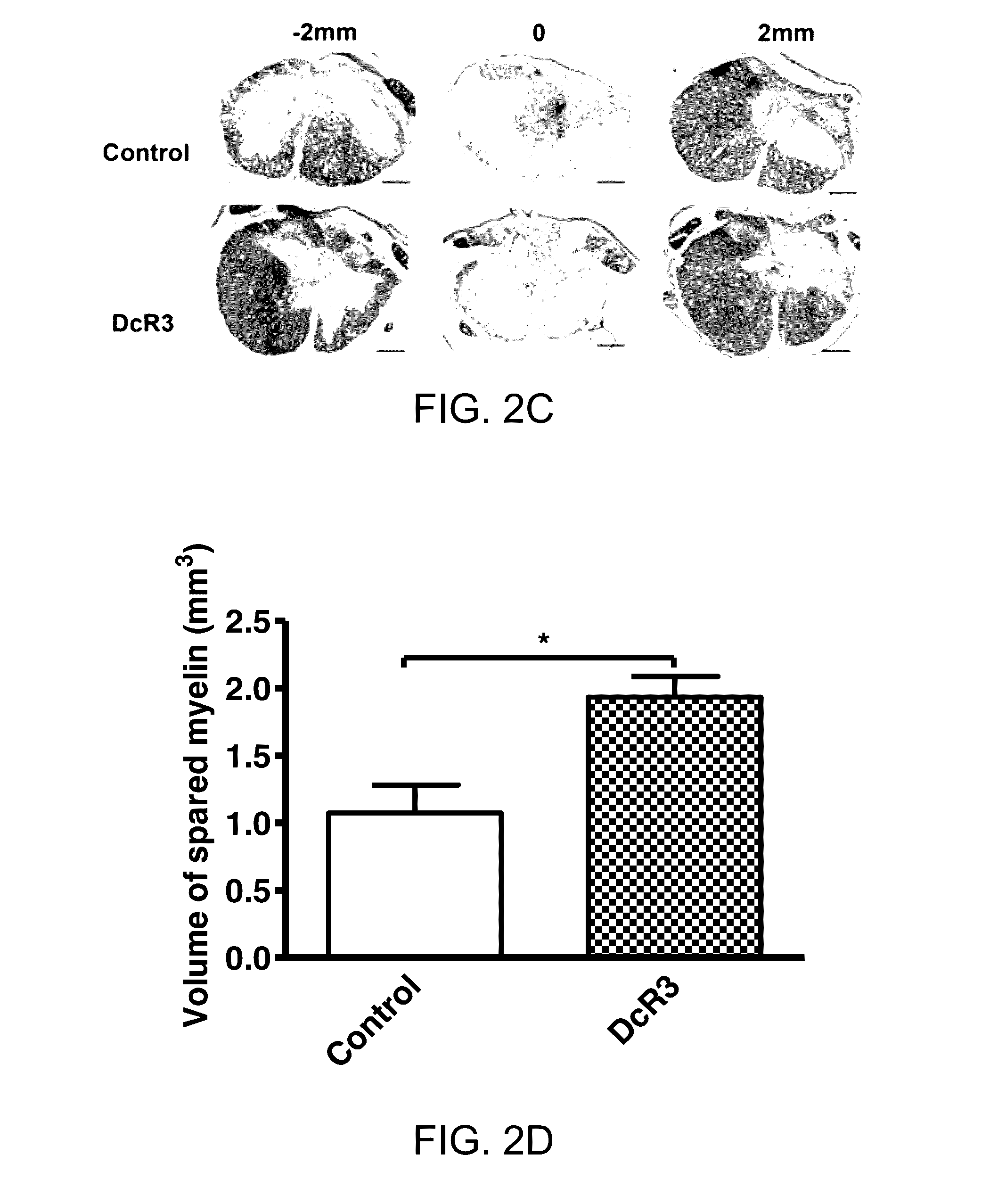Recombinant decoy receptor 3 for treating spinal cord injury
- Summary
- Abstract
- Description
- Claims
- Application Information
AI Technical Summary
Benefits of technology
Problems solved by technology
Method used
Image
Examples
example 1
DcR3.Fc Treatment Improved Hindlimb Function after Spinal Cord Injury
[0077]To investigate the efficacy of recombinant human DcR3 polypeptide on hindlimb activities, recombinant human DcR3 polypeptide (hereinafter, the DcR3.Fc protein) was first prepared and then administered to rats with spinal cord injuries.
[0078]First, the open reading frame of the human DcR3 gene was isolated by RT-PCR using the forward primer of SEQ ID No. 3 and reverse primer of SEQ ID No. 4. The amplified product was ligated in-frame into the EcoRl-cut pUC19-IgG1-Fc vector containing the cDNA of the human IgG1 Fc. The fusion gene was then subcloned into the pBacPAK9 vector (Clontech Laboratories, Palo Alto, Calif.) and cotransfected with linearized BacPAK6 DNA (Clontech Laboratories) into Sf21 cells. The supernatant from recombinant virus-infected Sf21 cells was filtered and purified on protein A-Sepharose beads. The bound DcR3.Fc protein was then eluted with 0.1 M glycine buffer (pH 3.0) followed by dialysis ...
example 2
DcR3.Fc Treatment Resulted in Smaller Wound Cavities and Increased Myelin Sparing at Lesion Sites
[0084]At 6 weeks post-injury, rats from example 1, above, were sacrificed to evaluate the wound cavities of the rats.
[0085]Animals (n=4 per group) were anaesthetized using a sodium pentobarbital and were perfused intravascularly with 0.9% saline and 4% paraformaldehyde in PBS at 6 weeks post-injury. Samples of spinal cords at the lesion sites (1 cm in length) were removed from the experimental animals, post-fixed overnight in 4% PFA, rinsed, cryoprotected in graded sucrose, and embedded into the optimal cutting temperature compound at −20° C. Spinal cord was transversely sectioned (20 μm thick) and then placed on slides. Cavity size was quantified using the protocol as follows. Briefly, hematoxylin and eosin (H&E) was used to stain nuclei and eosin for cavities and Luxol fast blue (LFB) used to identify myelinated white matter. Images were photographed from the rostral end to the caudal ...
example 3
Dcr3 Treatment Reduced LPS-Induced NO Production and iNOS Expression in Microglia Primary Culture
[0089]Primary mixed-glia culture was prepared from spinal cord of 250 g adult Sprague-Dawley rats. Briefly, the spinal cord was removed from the skulls, the meninges and blood vessels were excised carefully, and the spinal cord was chopped finely with scissors. The cell aggregations were further dissociated using 0.25% trypsin and 0.05% EDTA by gentle trituration using a pipette, followed by washing in DMEM containing 10% fetal bovine serum (FBS) and centrifugation. The pellet was resuspended in Dulbecco's Modified Eagle's medium (DMEM), passed through a 70-micron nylon mesh, followed by a second wash and centrifugation. Thereafter, cells were seeded in a density of 5×105 cells / ml and incubated at 37° C. with 5% CO2 for 48 hours. After the incubation, any non-adherent cells were removed and fresh DMEM was added. For microglia enrichment, cultures were thoroughly mixed using an orbital sh...
PUM
| Property | Measurement | Unit |
|---|---|---|
| Fraction | aaaaa | aaaaa |
| Fraction | aaaaa | aaaaa |
| Fraction | aaaaa | aaaaa |
Abstract
Description
Claims
Application Information
 Login to View More
Login to View More - R&D
- Intellectual Property
- Life Sciences
- Materials
- Tech Scout
- Unparalleled Data Quality
- Higher Quality Content
- 60% Fewer Hallucinations
Browse by: Latest US Patents, China's latest patents, Technical Efficacy Thesaurus, Application Domain, Technology Topic, Popular Technical Reports.
© 2025 PatSnap. All rights reserved.Legal|Privacy policy|Modern Slavery Act Transparency Statement|Sitemap|About US| Contact US: help@patsnap.com



